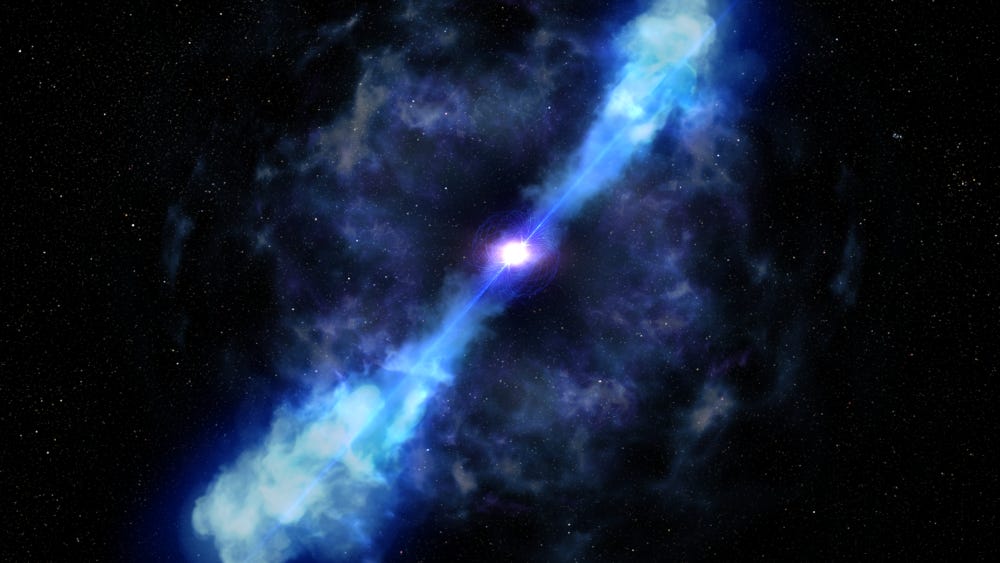Kilonova Explosion GRB 200522A Gives Birth to a Magnetar
A collision of neutron stars gives birth to a rare magnetar during a dazzling display.
The largest kilonova explosion ever seen by astronomers, recently observed by the Hubble Space Telescope, may leave a dynamic magnetar behind.
By James Maynard
An artist’s concept of a kilonova explosion, merging two neutron stars into a magnetar. Image credit: NASA, ESA, and D. Player (STScI)
On May 22, 2020, light from a titanic explosion deep in space reached Earth. The energy seen by astronomers told of the collision of a pair of neutron stars, creating a kilonova explosion. This event, releasing more energy in a half second than our Sun will produce in 10 billion years, left a rare object behind in the debris.
When astronomers examined the eruption, they found evidence of a magnetar — an ultradense neutron star, roughly the size of a city, housing a powerful magnetic field.
The discovery — the first time a collision of neutron stars has ever been seen — was made through studies conducted in visible wavelengths of light, as well as infrared, radio, and X-ray frequencies. The first light from the event, 7.6 billion light years from Earth, was seen in the form of a highly-energetic short-gamma ray burst. These are gamma-ray bursts that last less than two seconds (longer GRBs are thought to be the result of the collapse of the core of a supermassive star).
Gamma rays have the highest frequency of all known forms of electromagnetic radiation. However, this display radiated energy throughout the electromagnetic spectrum.
Read more: https://thecosmiccompanion.net/kilonova-explosion-grb-200522a-gives-birth-to-a-magnetar
For more details on space and astronomy news, please visit: thecosmiccompanion.net or thecosmiccompanion.com.
Thanks for watching, listening, and sharing!
- James



